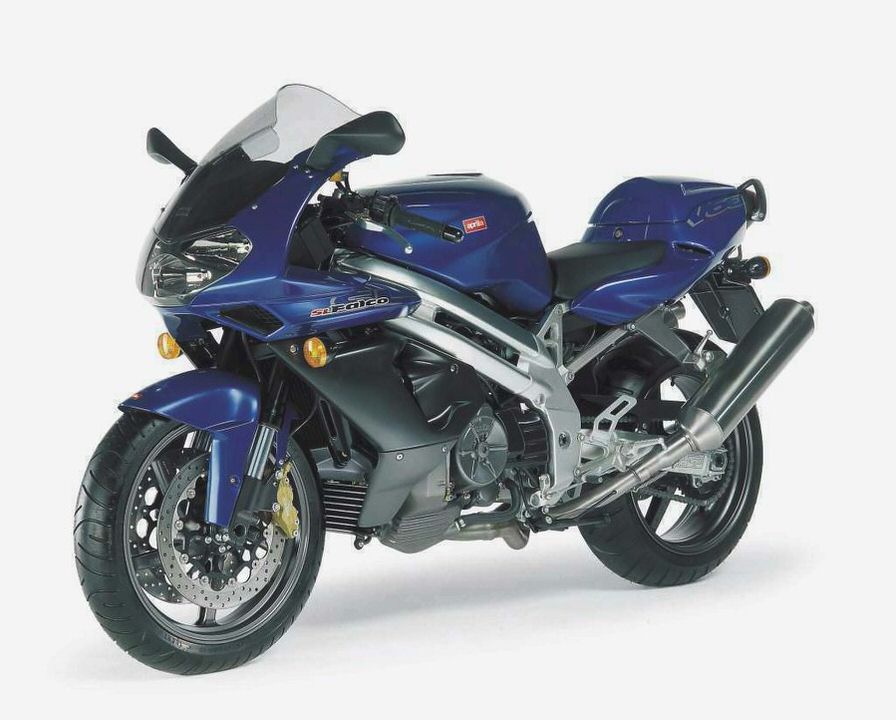
Aprilia SL 1000 Falco
“What the hell is an Aprilia Falco?” is what I wondered when I first saw the bike. It isn’t enough different from the Aprilia Mille not to be a sportbike, yet it doesn’t have bars high enough to be in the same class as, say, the Triumph Speedtriple. According to Aprilia, the Falco is a “light-sports” bike designed for those, “…who identify with the pleasure of a sporty but not extreme ride.” I guess that means it’s a diet Mille.
Same great taste…or something.
The SL 1000 Falco has an absolutely, completely different chassis from the Mille line of Aprilia’s superbikes and, where the Milles hide theirs, the Falco makes every effort to show the frame off. The fairing is only a three-quarter unit, and except for shrouding the ram air intake ports, the fairing is carefully cropped to keep from covering any of the frame. But since it has a full upper, ram air intakes, triple headlights, and a low screen, from head-on the bike looks full-sports.
But that’s just from head on.
Around back, the Falco looks…different from the Mille and different from everything else. Those who, for some reason, don’t like what is to me the nicest part of the Mille’s design-its tailsection-might be very happy for this stark difference. That, or just as confused.
I choose the word confused because that’s the only way to describe those whose taste doesn’t agree with mine.
Anyway, the tailsection on the Falco is cut sort and the passenger handrails and taillight are each more of a separate unit bolted on behind the tailsection than part of it. Its look is kind of funky for the first few seconds but it grows on you quickly. Also of important note is that the handrails-which are some of the most unobtrusive and nicest looking in the business-are removable with an allen wrench and the result is a cleaner-looking tail.
But the most interesting detail out back is the rear fender, which is just a short thing hanging by two small outer brackets and one center-mounted airfoil-like thing that hides the wiring for the license plate and taillights. The look is airplaneish and definitely sporty, light or not. The bottom side of the tailsection is fully enclosed, again giving it a sportbike or racebike look.
The tailsection also features a rear cowl cover or passenger pad, the second of which we haven’t actually seen since we tend to forget to ever take passengers with us. But knowing where the pad goes and seeing where the passenger pegs are it is easy to guess that people will enjoy riding on the back of this bike about 3% more than riding on the back of a Mille. The color of the Falco we tested is unlike that of any other bike on the market and is a sort of burnt-orange-cranberry-metallic that gets everyone to go, “Ooh,” when they see it.
The Falco’s engine is somewhat in view, which should appeal to the older sportbike guys because it’s the way superbikes used to be back when men were men and bikes were ridden by only the menliest of men. Much work had to be done for this to be possible because the Milles have lots of unaesthetic parts hidden under their fairings, like the water reservoir and coils and such. Some of this work is successful and some isn’t.
The engine, of course, is a dry sump and the external oil sump on the Falco is located on the left forward side of the engine and underneath it. On the left side, the sump looks all normal and incorporated into the bike’s design, but from the right side, only a rather funny-looking tin sack can be seen just sort of inexplicably floating under the engine like some kind of disembodied goiter.
The frame also has a race-bike-style rear subframe that is a bolt-on unit rather than welded in place. And too, the swingarm comes equipped with racestand pins to facilitate rear wheel removal.
The Aprilia Falco is powered by a de-tuned version of the Aprilia Mille’s 60-degree V-twin engine and the only real hard difference we could determine was the compression ratio, which is lower and thus results in lower horsepower and torque numbers. Different pistons, cams, and cam timing each can alter a compression ratio as can leaking valves and bad rings, but we’re really doubtful that the latter was the course Aprilia chose for the lowered compression. Cams of less lift and duration are the usual route for lower compression from what a full-sporting brother might have, because doing so tends to result in the additional benefit of extended engine life; radical performance does eventually get tiring to little pieces
Aprilia SL 1000 Falco
The Showa upside-down forks are fully adjustable but the rear Sachs shock only has adjustment for preload and rebound and does not have a remote reservoir. The swingarm is also much smaller in section than that of the Milles and is straight from pivot to axle instead of banana-shaped. Adding to the Falco’s different look are twin pipes rather than the single giant canister of the Milles, and the system and canisters are stainless.
And, all of the pipe connections feature spring fasteners, again, a feature derived from racing.
The front brakes are dual four-piston gold Brembos mated to 320 mm rotors and they work just fine. Part of the trick could be the four different diameters of the pistons and, of course, the Freudenberg brake lines. (We’re guessing Freudenberg is Tyrolean for rubber.)
The clip-ons and upper triple clamp appear to be the same as the Milles and the seating position is full-sport, as hinted at earlier. A really neat feature is that the clip-ons can be adjusted and so can the steering stops, so if a rider pulls the clip-ons back, his fingers and the gas tank won’t become the steering stops. The dash on the Falco also looks to be the same as that of the Milles and RS250, with all sorts of buttons and a digital display for everything except the rpms, which are analog.
Riding Impression
The Falco comes sans a steering damper and that is quite okay because none of us ever found ourselves in a desperate moment with the blood drained from our head, wishing for a damper. At all speeds, in all sorts of turns and road conditions, the Falco always tracked with certainty and confidence. The wheelbase and the rake are the same as Mille bikes, but the trail of the Falco is five mm more at 100 mm, which could explain the bike’s stability.
But it could also explain why the bike is a tad heavy steering in tight turns and in the city.
On mountain roads, the Falco has an initial turn-in that takes a few miles to adjust to but, once planted into a cornering attitude, the bike tracks through on any line of choice. And although it has a nice locked-in feeling in a corner, it is nothing to adjust the bike to a new line or speed, and it has very little tendency to stand up under mid-corner braking.
The brakes have a constant feel and take no guessing to adjust to. They maintain their touch from initial grab to hard pull and over extended and increased heat, never getting wooden, soft, or hard. It’s the uniquely Brembo feel, and although it can be improved a bit with the addition of braided lines, it is a feel that should not be traded away.

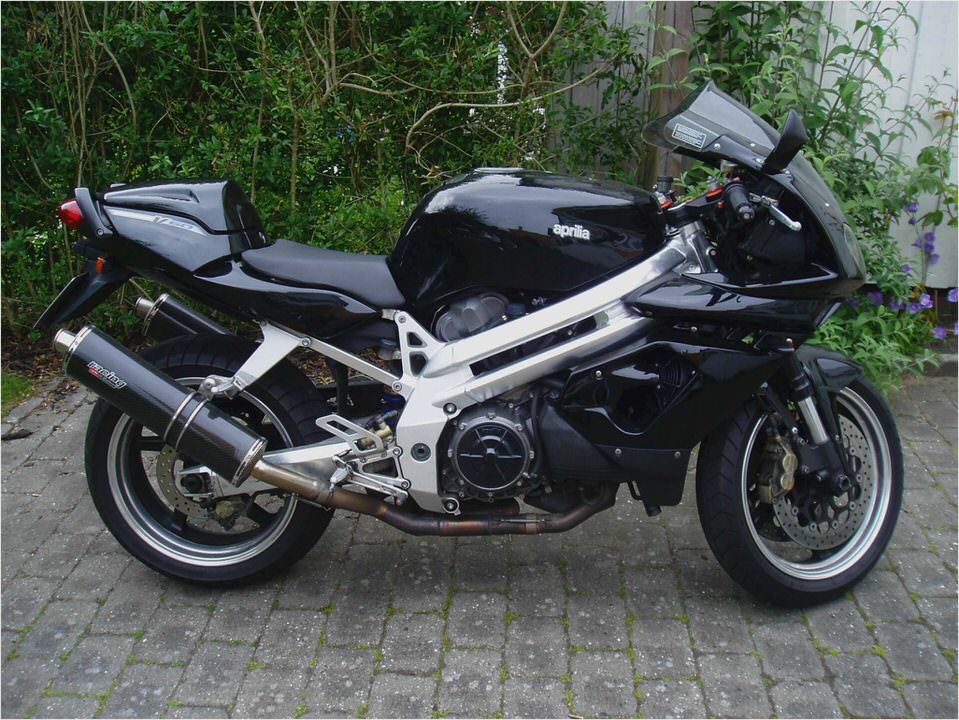
The Falco’s detuning from the Mille is not just for horsepower but also for torque, and so it doesn’t really like to be lugged at low rpms, and maybe even less so than the Mille. At engine speeds below 3,000 rpms, the engine firings become rapping sounds like King-Kong-sized castanets, but as the spinning nears 4,000 rpms, the pops turn into the comforting powerful bellow of a big twin. And at that rpm, the bike starts to go.
The power is mostly from six grand on up to redline, and throughout those revs, the power curve is nice and flat. The Falco’s revs are more of a feature of time at a specific power than a spinning through mounting power. The rpms rise but life never gets frantic.
Maybe that sort of thing isn’t racy but it sure is easy on the rider.
Notable about the Falco, and all Aprilias that share its engine, is the ease of shifting. Gears are always where they should be and, light or heavy footed, they tend to always come easily. Except, of course, for neutral when the bike is at a stop.
From the seat of the pants, the Falco does not feel slow. It might not feel exceptionally fast either, but it certainly doesn’t feel slow. And, from the seat of the pants, there is very little that feels different between the Falco and the Mille.
The Falco is just as certain in the turns as the Mille, and it is easy to ride the bike hard when discretion permits. Simply put, for an Italian V-twin sportbike, there is nothing lacking from the Falco and any disadvantage it has in power from the standard Mille can easily be made
up for with a few of your basic aftermarket parts. If I rode the Falco with my eyes closed, I could easily convince myself that I was riding a Mille while running off the road.
“Light-sport” or not, the Falco is a true sportbike through and through, and it delivers all that a sportbike should. It is not a semi-naked street fighter by any stretch, but Aprilia didn’t intend that to be its nature anyway. The Falco is supposed to be more in the class of the Ducati 900 Supersport and be to the Mille as the 900SS is to the 996, not as the Monster is to the 996.
But in the Falco’s case, you get all of the valves and all of the other cool high-tech engine parts found in the Mille, which is now out there winning poles and World Superbike races and so is increasingly cool to have in your garage.
For some of us, the Falco just isn’t different enough from the Mille models to stand, as a bike, unique. Don’t misunderstand-it is a very competent bike and it is every inch, or mille meter, qualified to call itself a sportbike, and that is exactly the problem. Aprilia already has a whole line of Mille sportbikes, so where does this thing fit in?
Who knows? If a rider is looking for a Mille to ride on the street, he would be better off in many ways to go for the Falco. It’s Italian, it’s an Aprilia, it’s a sportbike, and it costs less.
The only thing damning about the Falco is that it is so damn good. “Light” or whatever, it’s a sportbike and it’s an Italian sportbike and it’s a very good performing Italian sportbike. Unless your riding buddy is Troy Corser, no one on
your block will notice that this bike lacks anything from the best of all sportbikes out there. You’re going to have to tell everyone yourself.
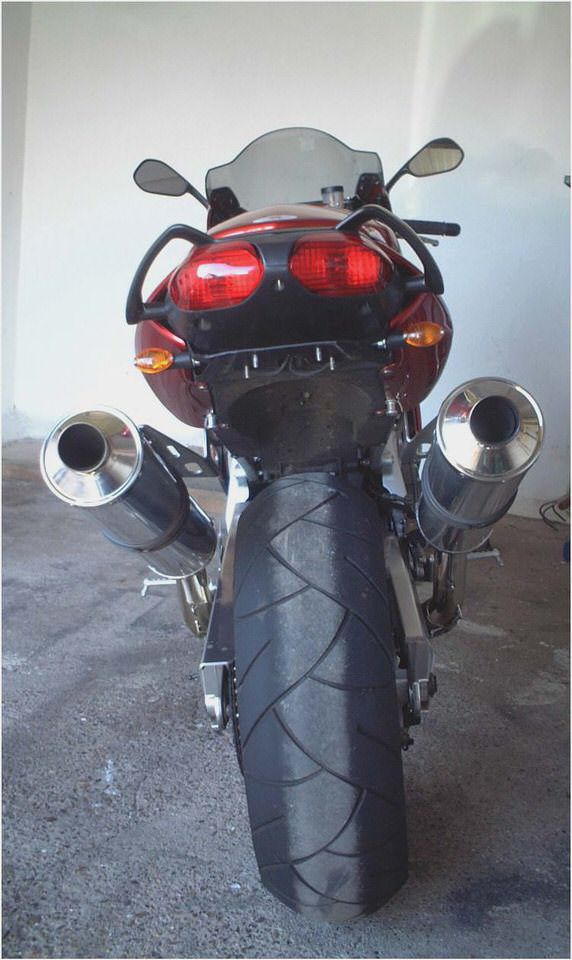

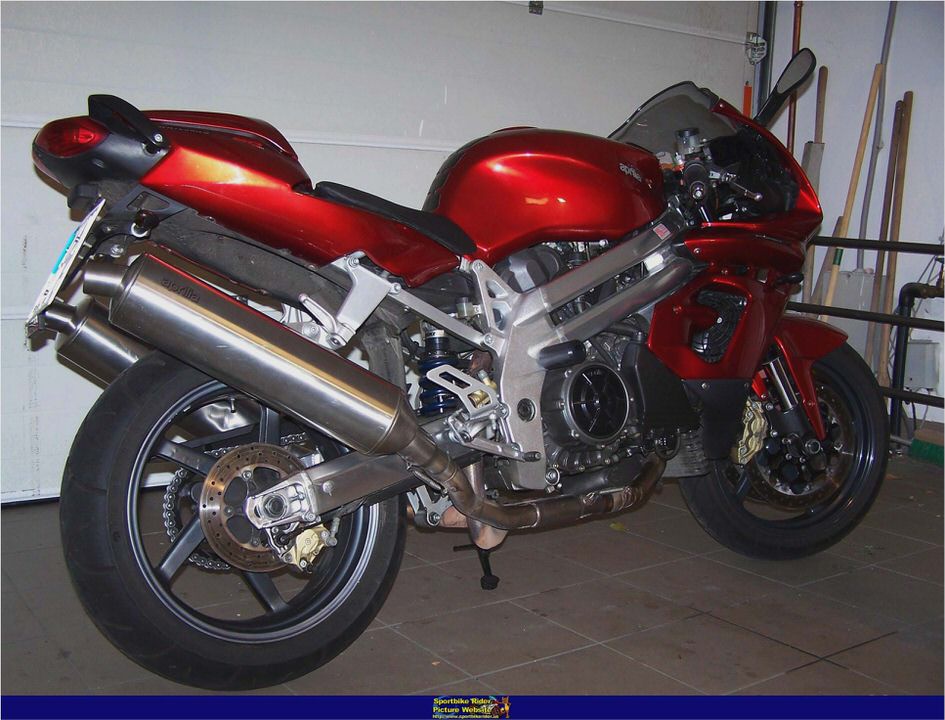
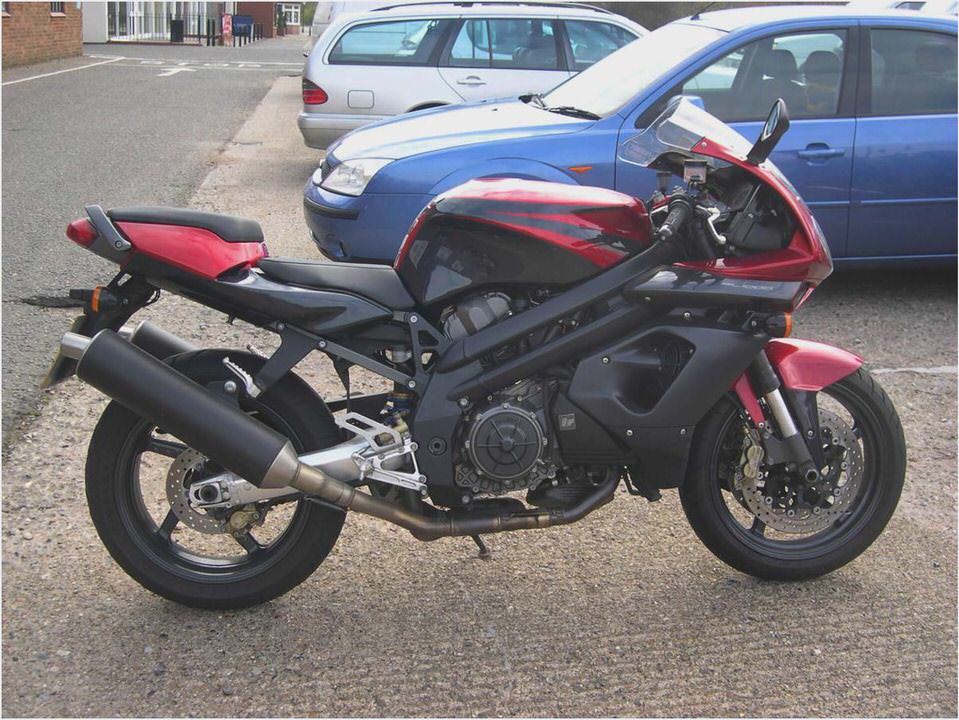
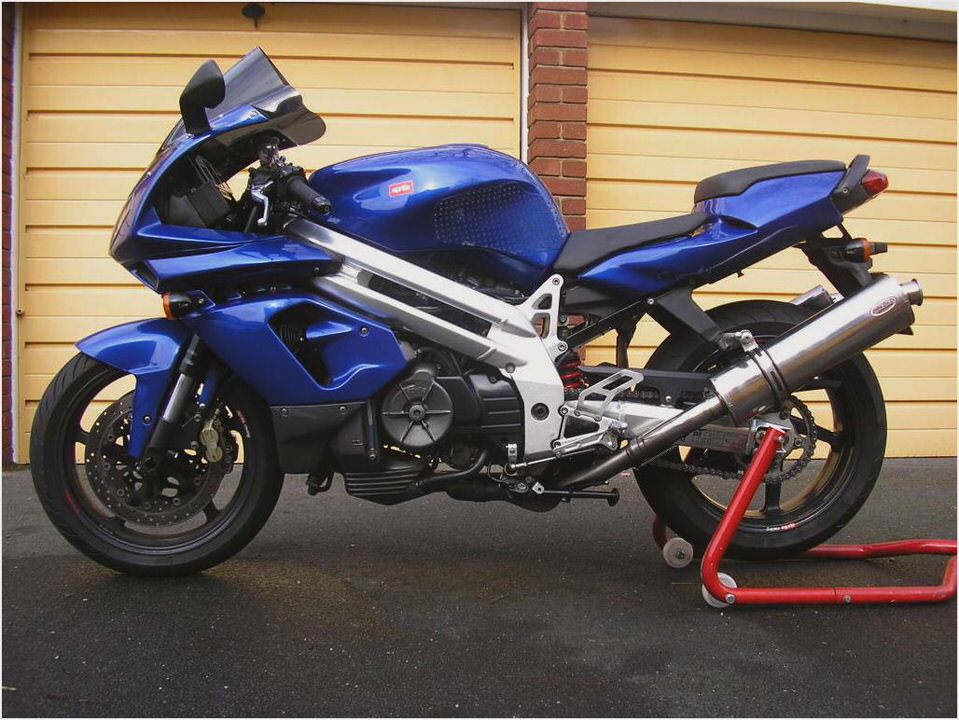
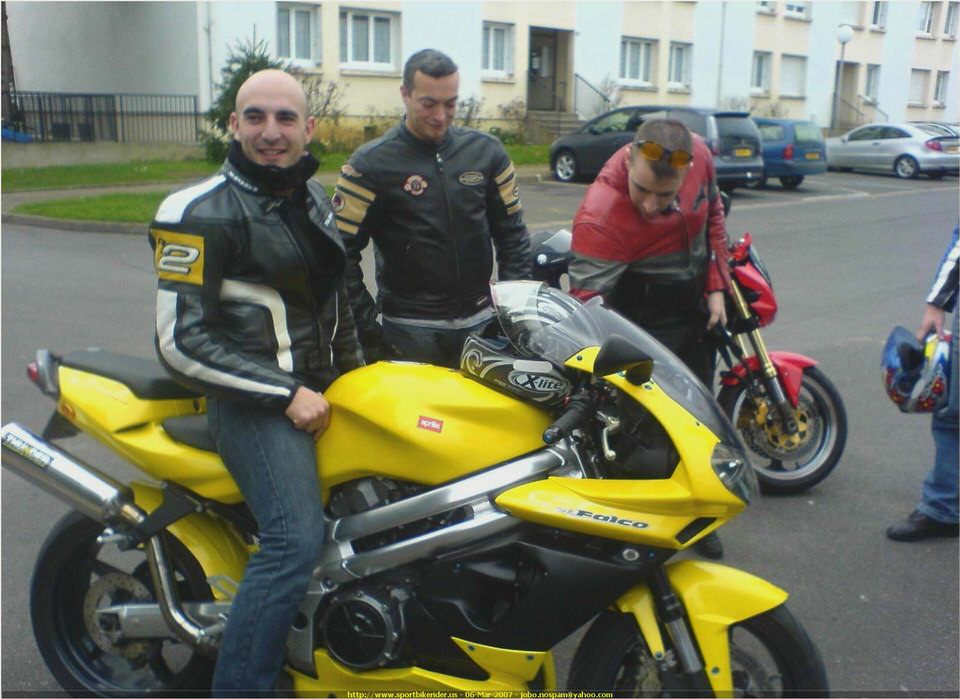
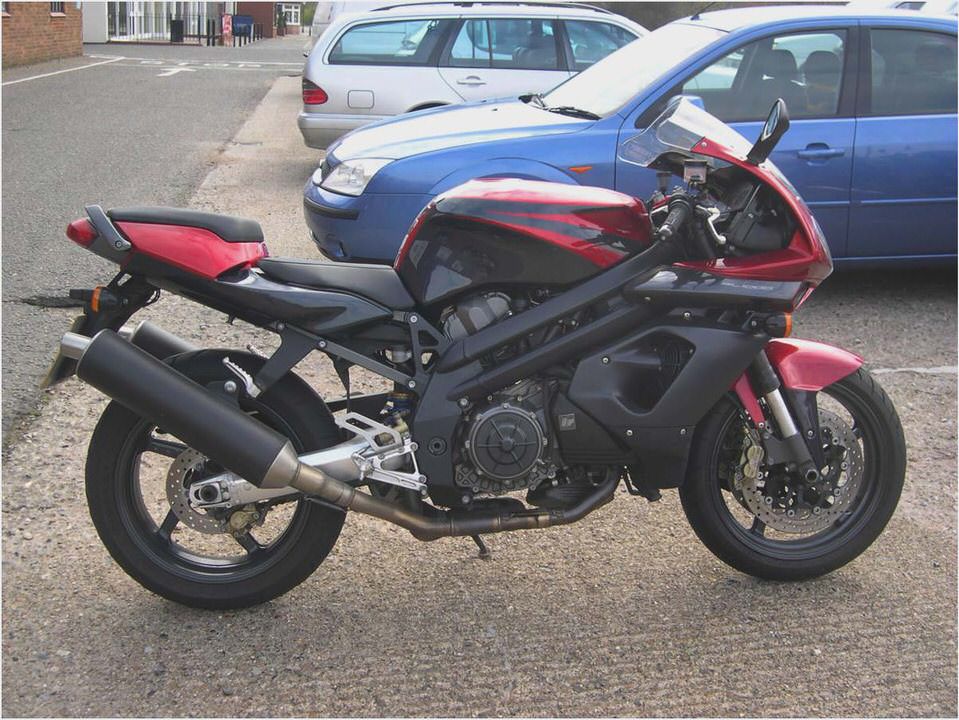
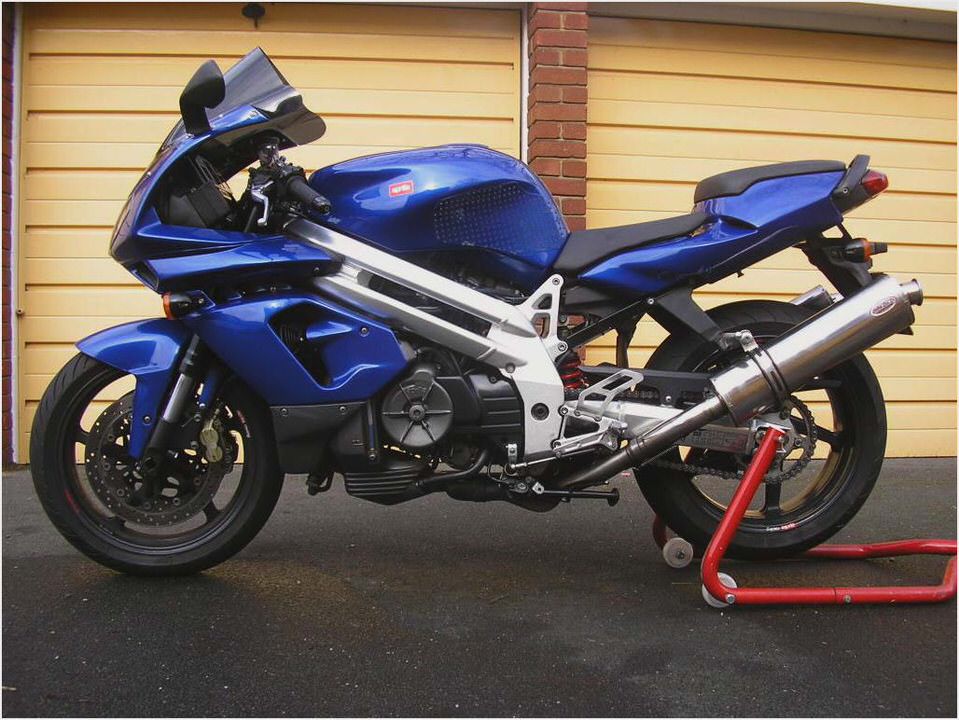

- Muscle Pickups: Six Quick Trucks that Can Haul – Yahoo
- Aprilia Dorsoduro 1200 Motorcycle Wallpapers The Car Wallpapers
- 2005 Aprilia Scarabeo 50 Ditech – Used 2005 Scarabeo 50 Ditech at Motorcyclist…
- 2011 Aprilia Dorsoduro 1200 2014 2015 New Motorcycles,Classic,Price,Pictures…
- Aprilia Pegaso 650 Trail Motorcycle directory
